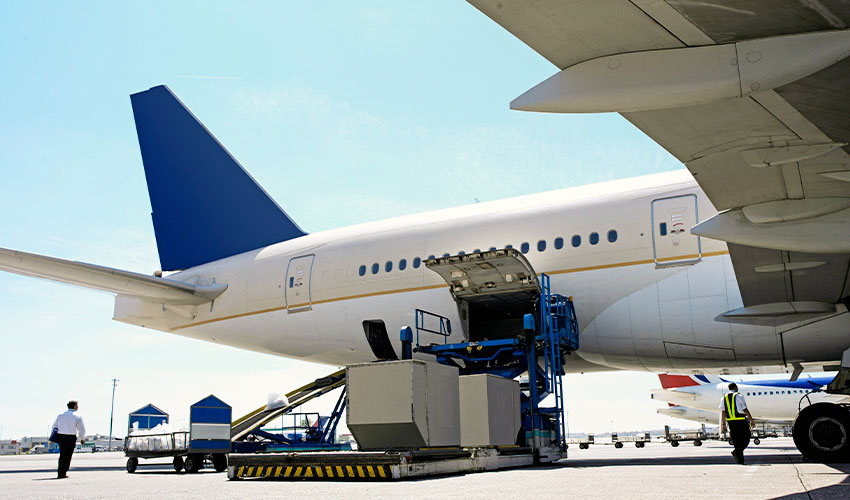As the aviation industry continues its advancement to recovery, there remain key challenges. Labor shortages, coupled with intense traffic peaks, are leaving airlines grappling with operations. While seeking solutions to their challenges, airlines, airports and ground handlers are also making sustainability a top priority. This is true across all regions even those that are struggling more than others such as the Asia-Pacific market. One sector that is helping key airports in Asia-Pacific and elsewhere is cargo, which continues to be an important revenue generator.
Challenges Continue for Europe’s Airports and Ground Handlers
Despite progress, resource and operational challenges continue to plague the aviation industry. European airports and ground handlers, in particular, have been speaking out on the complex challenges they are facing. Sudden surges and concentration of air traffic in certain hubs has introduced new challenges for these airports and their ground handlers. Consequently, there have been numerous flight delays and cancellations and the associated decline in the passengers’ experience. Further complicating their predicament are the many COVID-19 related measures that must be taken. Whereas airlines received considerable financial support to assist in their new pandemic-related compliance measures, airports and ground handlers received far less, putting a fiscal strain on operations. The tight labor market is also constraining operations. This is particularly true in the security and ground handling jobs which are associated with lower salaries and working unpopular shifts seven-days a week. With this profile, these positions are not readily attracting new recruits. To tackle these challenges, the airports and ground handlers are focusing on implementing such measures as quicker security clearances for airport and ground handling staff, airlines modifying their schedules to ease traffic peaks, return unused slots as soon as possible, and maintaining open and ongoing communications with all stakeholders to facilitate progress.
Strategic Sustainability Measures
Like other industries, sustainability has become one of the aviation industry’s most important priorities. Not only are aviation companies heightening their Environmental, Social and Governance (ESG) initiatives to focus on sustainability efforts, but they are developing much more strategic approaches to reducing their carbon footprints across all areas of operations.
The aviation industry may be much more focused on sustainability than other industries based on a recent Forbes report. The report stated that 90% of executives across diverse industries believe sustainability is important. Unfortunately, the same report cited that only 60% of companies have a sustainability strategy. For their part, several airports have shown real leadership in developing sound, top-down sustainability strategies that engage all staff members and leverage technologies and training. They also reflect an understanding of the interdependencies between sustainability, threats, and opportunities. Reporting and documenting sustainability initiatives are also part of their strategy. They are updating their websites frequently with sustainability-related strides, sharing news on their social channels, and reflecting these developments within their ESG programs. Sustainability is becoming an integral part of their broader corporate branding.


Asia Pacific Slower in Its Recovery
Clearly, some regions are advancing toward recovery faster than others. Lagging behind in its international connectivity recovery has been the Asia Pacific region. International connectivity globally had recovered to 62% of its pre-pandemic level, but largely related to the activity in the Americas and Europe. A contributing factor has been the lifting of travel restrictions across the North Atlantic. Even with the Russia-Ukraine war and new Omicron variants which had an impact, by May 2022, international connectivity across three major routes had reached a minimum 80% of the pre-pandemic level. This is in stark contrast to what is happening in the Asia Pacific region. Its international connectivity remains at 22% of its 2019 level. Travel restrictions imposed by China are having a significant effect with long haul connectivity between Asia and Europe and North America being suppressed to an estimated one third of pre-pandemic levels. This is further reflected in international trade data. WTTC data indicated that international visitor spending dropped by 88% to US$71 billion in Asia Pacific in 2021 compared to US$575 billion in 2019. Ongoing cargo capacity shortages are also affecting the Asia Pacific region’s recovery.
Top 10 Airports in Cargo Handling
With cargo continuing to play an important role in the aviation industry’s recovery, there are some airports that have captured the greatest share in this sector. The Airports Council International (ACI) recently ranked the world’s top busiest airports based on their cargo handling. Here are the airports that came out on top with the amount of cargo they handled in 2021:
- Hong Kong International Airport – 5,025,495
- Memphis International Airport – 4,480,465
- Shanghai Pudong International Airport – -3,982,616
- Ted Stevens Anchorage International Airport – 3,555,160
- Incheon International Airport – 3,329, 292
- 6. Louisville Muhammad Ali International Airport – 3,052,269
- 7. Taiwan Taoyuan International Airport – 2,812,065
- 8. Los Angeles International Airport – 2,691,830
- 9. Doha Hamad International Airport – 2,620,095
- 10. Tokyo Narita International Airport – 2,644,074
What do you think are some of the greatest challenges coming for aviation during the recovery phase? Let us know in the comments below.




0 comments on “Aviation Wrap-Up May 2022”